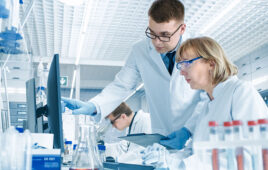
More sophisticated methods may be required to assess the accumulation and wider impact of human and veterinary pharmaceuticals within the aquatic environment, scientists have said.
It comes after research led by the University of Plymouth showed that commonly used medications were not absorbed by riverine bacteria as might have been expected based on models and previous tests.
It means that many medicines of similar type, excreted into surface waters directly or via treated and untreated wastewaters and biosolids, may remain intact for a considerable time, maintaining the potential for them to cause negative impacts on aquatic organisms.
The study, funded by the Natural Environment Research Council and published in Environmental Chemistry Letters, was led by Dr. Mark Fitzsimons and Dr. Alan Tappin, of Plymouth’s Biogeochemistry Research Centre, in conjunction with the Institute of Integrative Biology at the University of Liverpool.
Fitzsimons, the corresponding author on the study, said: “The contamination of surface waters by pharmaceuticals is now widespread, but there are few data on their environmental behavior. However, recent research has suggested that the behavior of freshwater fish can be altered by current measured levels of pharmaceuticals. This study shows that improved predictive power, with respect to modelling bioaccumulation, may be needed to robustly assess the environmental risks of pharmaceuticals in aquatic environments.”
The study investigated the persistence of four widely-used, cationic pharmaceuticals included in the World Health Organization List of Essential Medicines. They included the anti-malarial drugs chloroquine and quinine, the anti-psychosis drug fluphenazine and an anti-worming agent, levamisole.
Over the course of 21 days, riverine bacteria contained with water collected from the River Tamar were exposed to each of the four pharmaceuticals, with the concentrations measured at the beginning and end of each period. Levamisole was the only pharmaceutical to be taken up by bacteria (with up to 19 % removal), while the concentrations of quinine, chloroquine and fluphenazine were unaffected.
Previous research at the University of Plymouth has suggested the natural photo degradation of diazepam and similar medicines—followed by bacterial breakdown—may reduce their potentially harmful impact on the UK’s freshwater environment.
Tappin added: “Although studies of pharmaceuticals in surface waters of high income countries is now in its fourth decade, there remains little systematic understanding of pharmaceutical transport, fate and impact. This is all the more concerning for lower income countries, where pharmaceutical use is forecast to increase significantly in the foreseeable future, with attendant increased losses of pharmaceuticals to the environment, and losses in many cases fueled by the aspiration for the increased use of waste water for the irrigation of agricultural and horticultural crops. This will only enhance the widespread diffuse contamination of aquatic systems by pharmaceuticals, with potential unforeseen consequences.”
To view the full press release, click here.
Follow us on Twitter and Facebook for updates on the latest pharmaceutical and biopharmaceutical manufacturing news!
Filed Under: Drug Discovery



